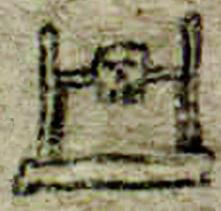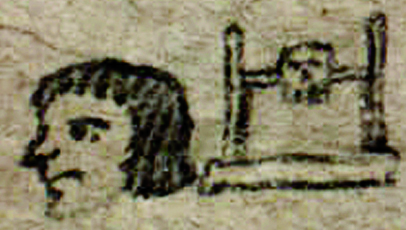Tzompan (BMapL75)
This black-line drawing of the simplex glyph for the personal name Tzompan (from tzompantli, skull rack) is attested here as a man’s name. The glyph shows a frontal view of a simple skull rack on a platform. It is an H-shaped wooden structure with one skull on the cross bar. The teeth of the skull are especially prominent.
Stephanie Wood
Most glyphs for the name Tzompan include some kind of flag (panitl or pamitl) design, perhaps in an effort to avoid a visual to which the clergy would surely object. Another choice was to use a sign for a tree called the tzompantli. See some examples below.
Stephanie Wood
This glyph is not glossed; the transliteration of the glyph comes from Gordon Whittaker’s contribution to the study by Mary E. Miller and Barbara E. Mundy (2012).
c. 1565
Jeff Haskett-Wood
craneos, muerte, muertos, nombres de hombres

tzompan(tli), a skull rack, https://nahuatl.wired-humanities.org/content/tzompantli
Estante de Cráneos
Stephanie Wood
Beinecke Map/Codex Reese, section 8, no. 40 in the Whittaker study (published in the Miller/Mundy book, 2012), and see the original at: https://brbl-dl.library.yale.edu/vufind/Record/3600017
The Bodleian Libraries, University of Oxford, hold the original manuscript, the MS. Arch. Selden. A. 1. This image is published here under the UK Creative Commons, “Attribution-NonCommercial-ShareAlike 3.0 License” (CC-BY-NC-SA 3.0).







